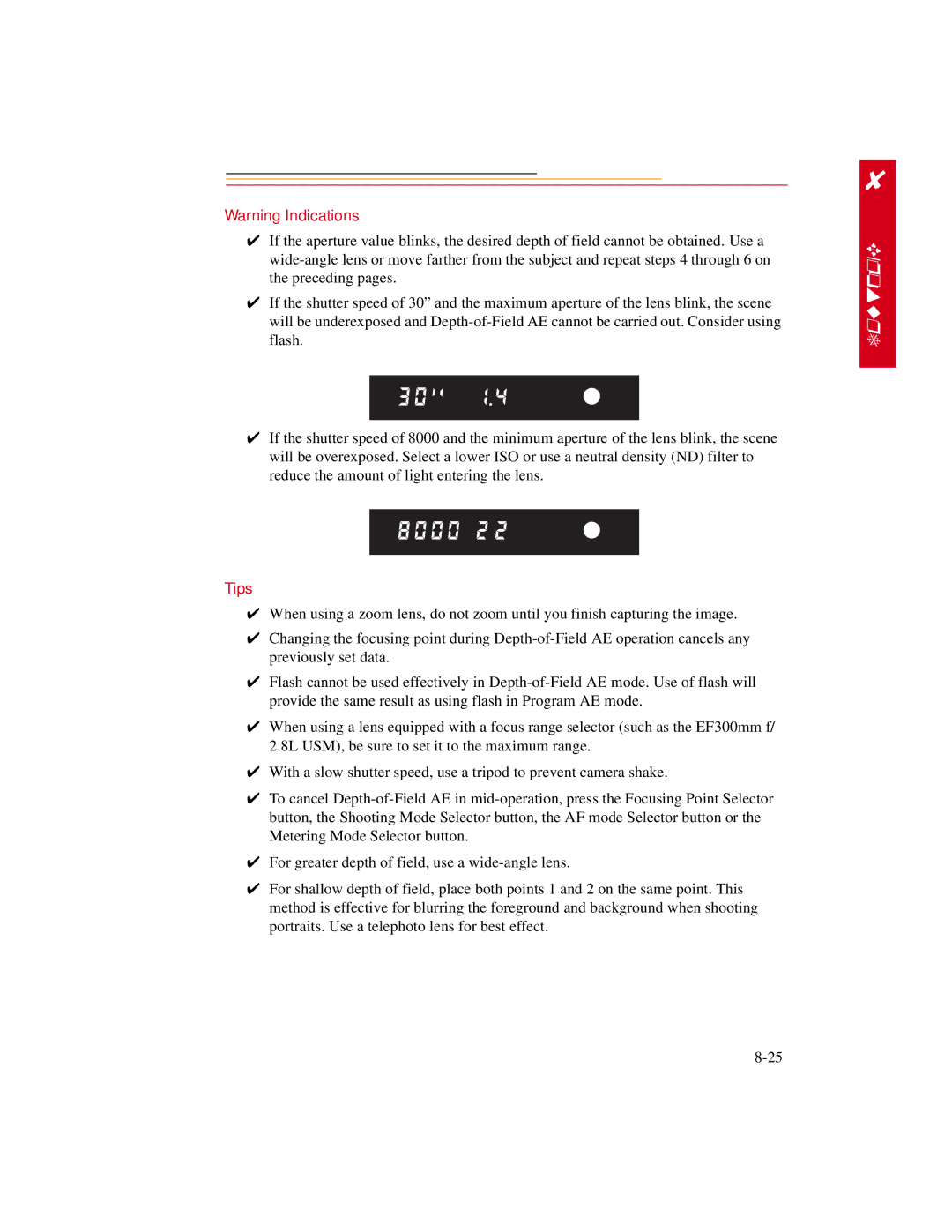
Warning Indications
✔If the aperture value blinks, the desired depth of field cannot be obtained. Use a
✔If the shutter speed of 30” and the maximum aperture of the lens blink, the scene will be underexposed and
✔If the shutter speed of 8000 and the minimum aperture of the lens blink, the scene will be overexposed. Select a lower ISO or use a neutral density (ND) filter to reduce the amount of light entering the lens.
Tips
✔When using a zoom lens, do not zoom until you finish capturing the image.
✔Changing the focusing point during
✔Flash cannot be used effectively in
✔When using a lens equipped with a focus range selector (such as the EF300mm f/ 2.8L USM), be sure to set it to the maximum range.
✔With a slow shutter speed, use a tripod to prevent camera shake.
✔To cancel
✔For greater depth of field, use a
✔For shallow depth of field, place both points 1 and 2 on the same point. This method is effective for blurring the foreground and background when shooting portraits. Use a telephoto lens for best effect.
8
